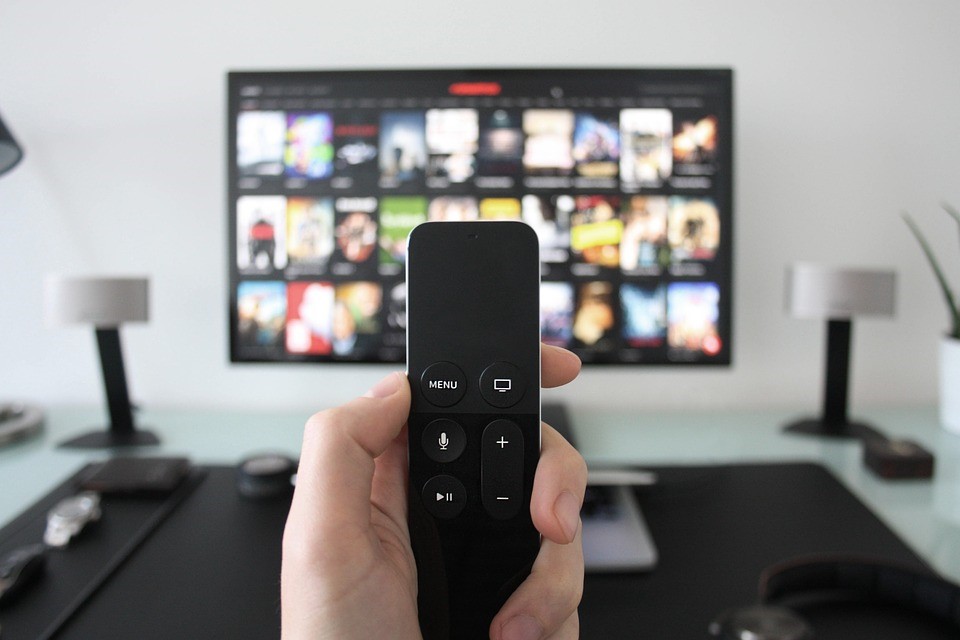Over-The-Top Providers: how have they revolutionized the customer experience?
Blog: Capgemini CTO Blog
Unfortunately, this is something we admit to doing far too often. What is it that these providers do that keep us so glued to our screens?
We’ve identified three areas that the likes of Netflix, Amazon Prime, and Now TV, (or as they are more generally referenced ‘the Over-The-Top’ or OTT providers), have focused on to deliver an exceptional customer experience and have revolutionized the industry against the set-top- box providers:
-
Content
Acquisitions vs commissions:
There has been a huge shift away from TV providers acquiring their content from studios. More recently, they have been commissioning and developing their own titles. This has moved the power away from the studios and has allowed the TV providers to not only win over new customers, but also increase their share of viewing by ensuring the content is exclusively available on their platform.
Back just a few titles:
Netflix is a great example of a company that has invested heavily in a small number of original shows. They don’t focus on the shows that customers can get elsewhere. Instead, they leverage their original and platform-exclusive shows to draw in all types of viewers. They have understood that a customer is happy to pay for a service, even if it is to purely watch one show (and if the customer is anything like us, they will forget to cancel the monthly subscription once they’ve finished watching).
-
Viewing experience
The adverts:
Who else purposely records a program to skip the adverts? Surprisingly, the statistics show that although we’re often watching a program we’ve recorded, or via Catch Up, most people forget to fast forward the adverts! This is great for the traditional advert-funded broadcasting model; however, creates an undesirable viewing experience.
By contrast, many OTT providers have adopted a customer centric approach by eliminating all adverts from shows (even the pre-rolls). This allows them to provide a more fluid and efficient experience for the viewer and encourages the customer to seamlessly move straight on to the next episode.
Platform UX:
Due to the origin of these web platforms, OTT providers can easily update any software. This means they can constantly improve their UX features, such as adding the ‘skip intro’ option, instantly playing the next episode, and making future programme recommendations. All of which are great tactics to keep viewers hooked to their services.
The set-top-box providers struggle in this space, as even small UX improvements often require months of tech development.
Omni-channel viewing:
Although free-to-air and Paid-TV services have made huge developments in ensuring all channels now having their own online viewing app (e.g. Sky Go and BBC iPlayer), the OTT providers have really defined what good looks like. Their digital nature means their operating models are best placed to handle evolving digital innovations.
What the OTT providers have really mastered is how to create a seamless experience cross-device. If you stop watching on your iPad, the service remembers exactly where you are when you start watching on your phone. This is a capability now available via Sky Q (Sky’s latest set-top-box); however, this was a very late player to market.
-
Pricing and infrastructure
Ease of installation:
The traditional set-top-box Paid-TV services require specific hardware to run. Both cable and satellite providers require an engineer visit and installation, before you can start your subscription. Often, you need to wait a few weeks to schedule this, and of course its dependant on both yourself and the engineer’s availability.
Compare this to the OTT providers that allow you to sign up with just a few clicks and be up and running within five minutes. This is a far speedier and more customer centric set-up, that engages the customer instantly.
Perhaps the traditional providers can improve their customer’s initial engagement by signing them up to their online apps, such as Sky Go or Virgin TV Go. This means that the customer can receive their paid services more swiftly, prior to their installation.
Subscription model:
As mentioned, partially due to the cost and effort required for set-up, the set-top-box providers tend to lock customers into either a 12, 18, or 24-month contract. This is far more in line with how mobile phone companies operate and makes it harder for customers to switch to another provider.
However, the OTT providers offer rolling month subscriptions. They give the customer the flexibility to cancel at any point, creating a more cost-effective solution. Nevertheless, as the price point is so low, we often just keep our subscription rolling, even when we are barely using it.
Price point:
It is evidently clear that the OTT providers are substantially cheaper than their set-top-box competitors. This allows them to tap into a much wider audience. For example, a student is less likely to install a cable or satellite box into their accommodation at university, but rather subscribe to Netflix or other OTT providers.
With such a drastic difference in price, customers are starting to question what they really get from their subscription, and whether it is worth the hefty price tag. This worry is more prominent around January time, when customers start to re-evaluate their finances for the year ahead. We begin to see value reminder messaging from the big Paid-TV players, and a more compelling release of televised content around that time.
So, what does the future look like for OTT services, and where does that leave traditional paid-TV providers?
- All TV providers will continue to invest in original content; however, OTT providers will see a greater share of viewing due to their lower price points. This may force the studios to move more into partnerships with TV platforms.
- OTT providers will need to ensure a constant supply of big hitting titles to win their subscription base in an ever-growing competitive market.
- Traditional Paid-TV providers will continue to benefit from their experience in scheduling and owning a live TV moment. We predict that the OTT providers will move into this space releasing their own live content, thus achieving their own moments of televised history.
- We expect to continue to see OTT providers leading the way when it comes to great UX. We eagerly await the next transformational feature releases, that will capitalise on future digital developments.
- Traditional TV providers need to invest significantly in technological innovation, and exercise agile deployment to ensure they can remain competitive and offer a similar customer experience to the OTT providers.
- Winning the sports rights will give providers a competitive advantage and will allow them to charge larger prices points for any live sporting events. We predict the sports rights will be shared more equally across providers.
- Set-top-box providers may need to rethink their pricing and subscription model to give the customer greater flexibility, to align and compete against the other providers.
We do not believe that the provision of OTT services suggests the end of traditional TV providers. We suspect a TV will always bring the household together for co-viewing. What it may mean is that these traditional providers will need to re-think their long-term pricing and tech development strategies, to keep up with the industry competitors and ensure they capitalise on the digital transformations that can enhance their customer’s experience.
Our Authors
Leave a Comment
You must be logged in to post a comment.










